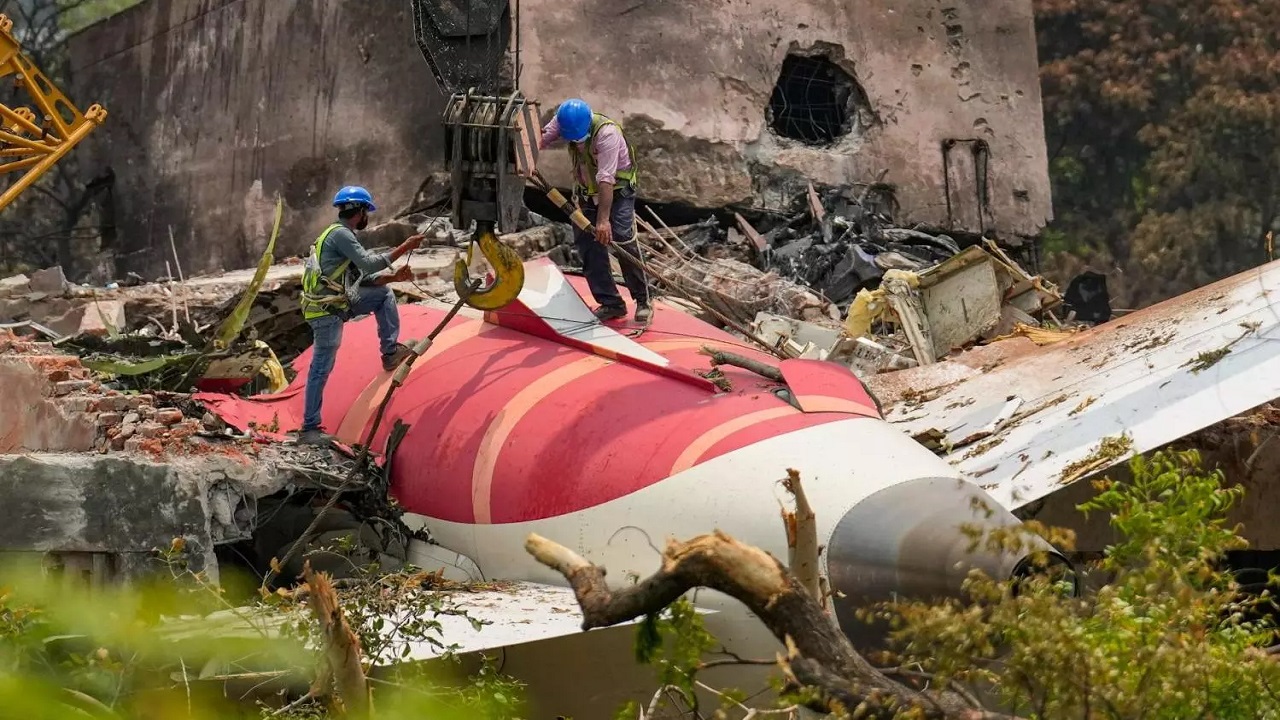India’s Aircraft Accident Investigation: Institutional Framework & Global Protocol
Context:
In the wake of the Air India AI 171 crash in Ahmedabad, which claimed the lives of 241 out of 242 people on board, India’s Aircraft Accident Investigation Bureau (AAIB) released its preliminary report, drawing attention to serious anomalies and raising safety concerns. This incident has once again brought focus to India’s air safety investigation mechanisms, international protocols under ICAO, and the legal and functional structure of AAIB.
Preliminary Findings of the AI 171 Crash Report
-
The Aircraft Accident Investigation Bureau (AAIB) released a preliminary report a month after the crash.
-
Both engine fuel control switches moved from ‘RUN’ to ‘CUTOFF’ within seconds of takeoff, causing suspicion of technical or human error.
-
One pilot reportedly questioned the other regarding the fuel cutoff, but the second pilot denied any action.
-
These switches are not prone to accidental movement, prompting detailed scrutiny of the:
-
Cockpit Voice Recorder (CVR)
-
Flight Data Recorder (FDR)
-
Global Aircraft Accident Investigation Protocols: ICAO Framework
Chicago Convention, 1944
-
International crash investigations are governed by the Chicago Convention, administered by the International Civil Aviation Organization (ICAO).
-
ICAO is a UN specialized agency, responsible for safe and orderly development of international civil aviation.
-
The ‘State of Occurrence’ (where the crash happens) leads the investigation.
Other Participating States (as per ICAO Annex 13):
-
State of Registry – Where the aircraft is registered.
-
State of the Operator – Country operating the flight.
-
State of Design – Country overseeing the aircraft's design and airworthiness.
-
State of Manufacture – Where the aircraft is assembled.
These states have the right to participate and access investigation data under ICAO norms.
AAIB – India’s Air Crash Investigation Agency
Establishment and Purpose
-
Aircraft Accident Investigation Bureau (AAIB) was formed in 2012 under the Ministry of Civil Aviation.
-
It was created to ensure independent and unbiased investigations, unlike the previous system where the DGCA conducted investigations.
Legal Framework
-
Governed by Section 7 of the Aircraft Act, 1934.
-
Earlier, investigations were conducted under the Aircraft Rules, 1937 by the Air Safety Directorate of DGCA.
-
Aligned with Article 26 of the Chicago Convention.
AAIB Rules and Structure
-
Aircraft (Investigation of Accidents and Incidents) Rules, 2012 established AAIB's formal role.
-
These rules were later amended in 2017 and 2021 to strengthen operational autonomy.
-
AAIB is an “Attached Office” under the Ministry of Civil Aviation to maintain administrative independence.
Functions and Powers of the AAIB
-
AAIB classifies safety events as:
-
Accidents
-
Serious Incidents
-
Incidents
-
-
Investigates all:
-
Accidents and serious incidents involving aircraft over 2,250 kg All-Up Weight (AUW)
-
Turbojet aircraft, regardless of AUW
-
Investigation Focus:
-
Not to fix blame, but to prevent future occurrences.
-
Ensures unrestricted and immediate access to:
-
Wreckage
-
CVR/FDR
-
Operator and maintenance records
-
Personnel involved
-
Investigation Process Followed by AAIB
-
On-site Visit:
-
Investigators dispatched to secure and collect perishable evidence.
-
-
Evidence Collection:
-
Data from operators, regulators, maintenance agencies, and aircraft manufacturers.
-
-
Expert Analysis:
-
AAIB may consult experts and collaborate with agencies like:
-
Hindustan Aeronautics Limited (HAL)
-
DGCA labs
-
-
-
Report Preparation:
-
After internal review, a final report is published and shared with:
-
ICAO
-
All involved states
-
-
Additional Functions of AAIB
-
Conducts safety studies related to civil aviation.
-
Issues safety recommendations to:
-
DGCA
-
International aviation regulators
-
-
Monitors the implementation and follow-up of those recommendations.



_(22).jpg)
Comments (0)